

General John J. Pershing Boyhood Home
Laclede, Missouri
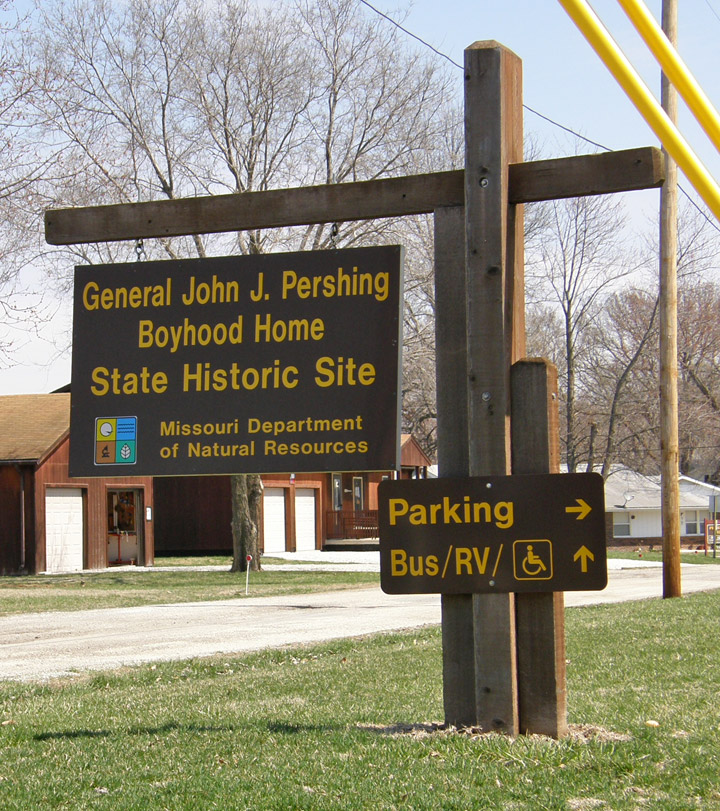
John Joseph "Black Jack" Pershing,
GCB (September 13, 1860 – July 15, 1948) was an officer in the United States
Army. Pershing is the only person, while still alive, to rise to the highest
rank ever held in the United States Army—General of the Armies—equivalent only
to the posthumous rank of George Washington. Pershing led the American
Expeditionary Force in World War I and was regarded as a mentor by the
generation of American generals who led the United States Army in Europe during
World War II, including George C. Marshall, Dwight D. Eisenhower, Omar Bradley
and George S. Patton.
John J. Pershing was born on a farm near Laclede, Missouri. His father, John F.
Pershing, was a businessman who owned a general store. When the Civil War began,
Pershing senior worked as a sutler for the 18th Missouri Volunteer Infantry
Regiment, but did not serve in the military.
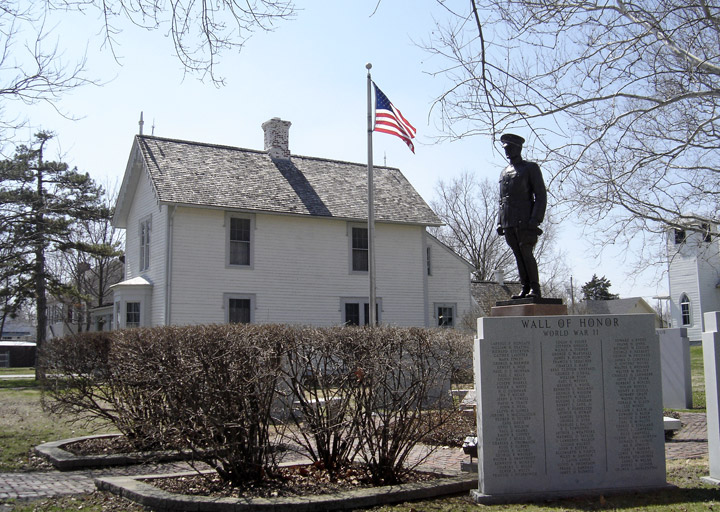
Pershing attended a school in Laclede that was reserved for the more intelligent
children who were children of high profile citizens. As Pershing's father was
well known in Laclede, Pershing and his brother attended this early form of
university preparatory school.
Upon graduation from secondary school in 1878, Pershing became a local teacher
and became involved with educating local African American children. In this way,
although living in an atmosphere of 19th century United States racism, Pershing
developed an understanding of racial issues that would later come to play in his
military career when he commanded a racially diverse unit of soldiers.
Between 1880 and 1882, Pershing attended the North Missouri Normal School (now
Truman State University) in Kirksville, Missouri. In 1882, he applied to the
U.S. Military Academy after hearing that West Point offered excellent college
level education. Pershing later admitted that a desire to serve in military was
secondary to attending West Point and that he mainly applied to the school
because the education offered was better than that of rural Missouri.
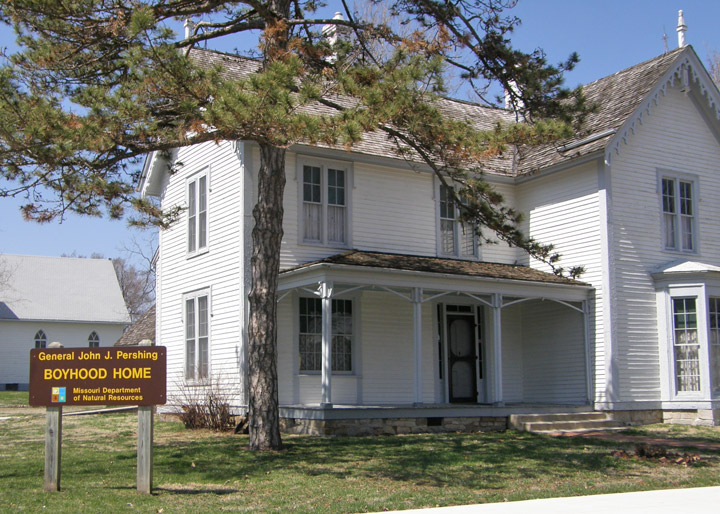
John J. Pershing was sworn in as a West Point cadet in the fall of 1882. He was
selected early for leadership and rose to become First Corporal, First Sergeant,
First Lieutenant, and First Captain, the highest possible cadet rank at West
Point. Cadet First Captain Pershing commanded ex officio the West Point Honor
Guard that escorted the funeral of President Ulysses S. Grant.
Pershing graduated from West Point in the summer of 1886 and was commended by
the Superintendent of West Point, General Wesley Merritt, as having high
leadership skills and possessing "superb ability".
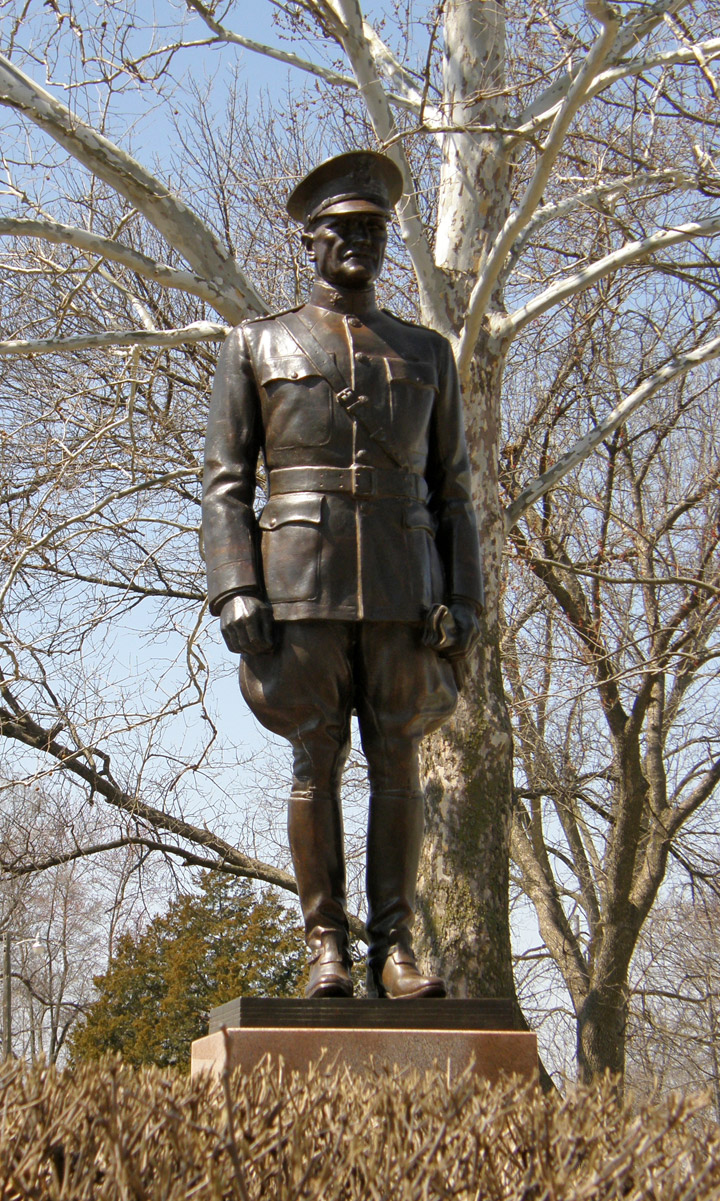
Just prior to graduation, Pershing briefly considered petitioning the Army to
let him study law and delay his commission. He applied for a furlough from West
Point, but soon withdrew the request in favor of active Army duty. He was
commissioned a Second Lieutenant in the United States Army in the fall of 1886,
at the age of twenty six, graduating 30th in a class of 77 from West Point.
Pershing reported for active duty on September 30, 1886, and was assigned to
Troop L of the 6th U.S. Cavalry stationed at Fort Bayard, in the New Mexico
Territory. While serving in the 6th Cavalry, Pershing participated in several
Indian campaigns and was cited for bravery for actions against the Apache.
Between 1887 and 1890, Pershing served with the 6th Cavalry at various postings
in California, Arizona, and North Dakota. He also became an expert marksman and,
in 1891, was rated second in pistol and fifth in rifle out of all soldiers in
the U.S. Army.
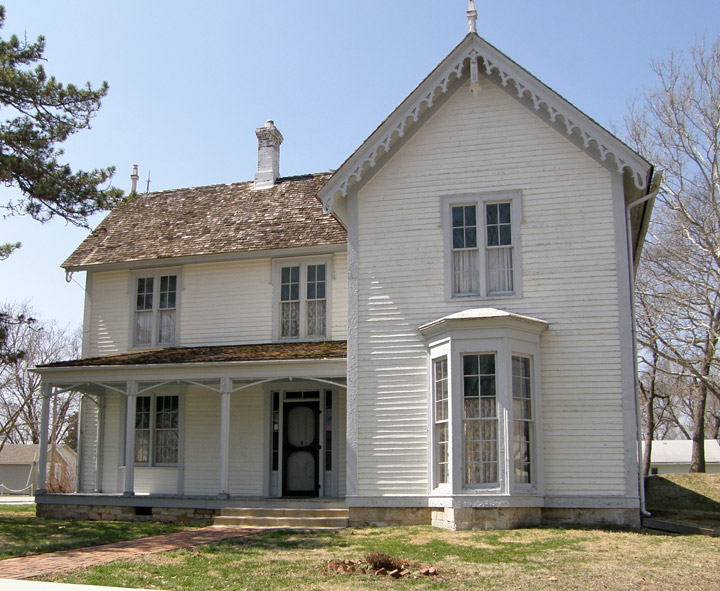
On December 9, 1890, Pershing and the 6th Cavalry arrived at Sioux City, Iowa
where Pershing played a role in suppressing the last uprisings of the Lakota
(Sioux) Indians. He participated as 2nd Lieutenant in the Wounded Knee Massacre.
A year later, he was assigned as an instructor of military tactics at the
University of Nebraska-Lincoln. Pershing would hold this post until 1895, but
was not promoted, remaining as a second lieutenant at the age of 35.
While in Nebraska, Pershing also attended law school and graduated in 1893.
Additionally, he formed a drill company, Company A, in 1891 that won the Omaha
Cup. In 1893, Company A became a fraternal organization, changing its name to
the Varsity Rifles. The group changed its name for the last time in 1894,
renaming itself the Pershing Rifles in honor of its founder.
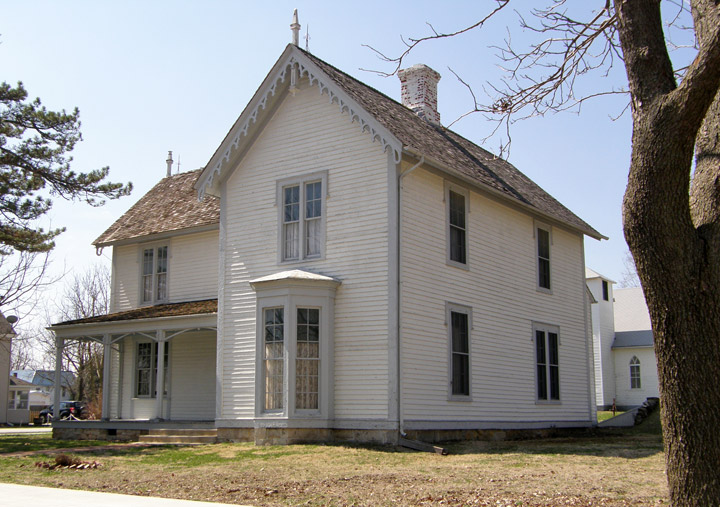
On October 1, 1895, Pershing was promoted to first lieutenant and took command
of a unit within the United States Army's 10th Cavalry Regiment (one of the
original Buffalo Soldier regiments), which was composed of African-American
soldiers under white officers. From Fort Assinniboine in north central Montana,
he commanded an expedition to the south and southwest that rounded up and
deported a large number of Cree Indians to Canada. Though, like the most of the
nation at the time, he was unsympathetic to Native Americans, Pershing was an
outspoken advocate of the value of African American soldiers in the U.S.
military.
In 1897, Pershing became an instructor at West Point, where he joined the
tactical staff. While at West Point, cadets upset over Pershing's harsh
treatment and high standards took to calling him "Nigger Jack", in reference to
his service with the 10th Cavalry. This was softened (or sanitized) to "Black
Jack" by reporters covering Pershing during World War I.
Upon the outbreak of the Spanish-American War, First Lieutenant Pershing (then
38 years old) was offered a brevet rank and was commissioned a Major of
Volunteers on August 26, 1898. He fought with distinction at Kettle and San Juan
Hill in Cuba and was cited for gallantry. In 1919, he was awarded the Silver
Citation Star for these actions and, in 1932, the award was upgraded to the
Silver Star Medal.
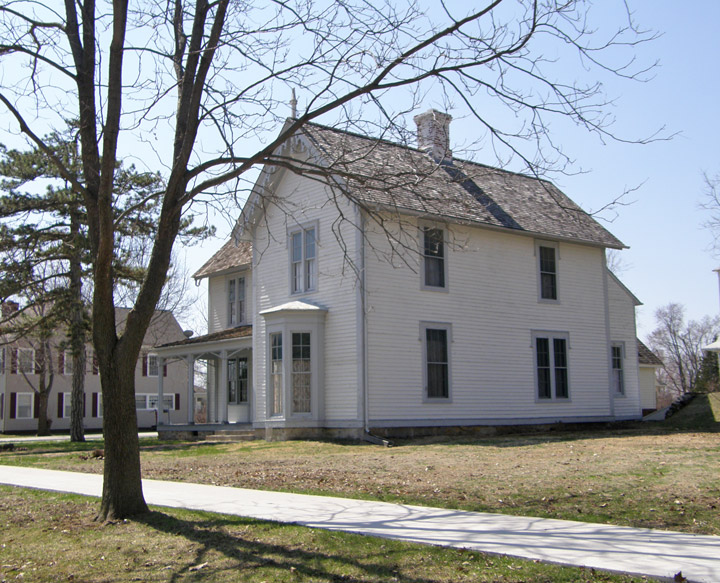
In March 1899, after suffering from malaria and spending a sick furlough in the
United States, Pershing was put in charge of the Office of Customs and Insular
Affairs which oversaw occupation forces in territories gained in the
Spanish-American War, to include Cuba, Puerto Rico, the Philippines, and Guam.
When the Philippine-American War broke out, Pershing was ordered to Manila and
reported for duty on August 17, 1899. He was assigned to the Department of
Mindanao and Jolo and commanded efforts to suppress the Philippine resistance.
On November 27, 1900, Pershing was appointed Adjutant General of his department
and served in this posting until March 1, 1901. He was cited for bravery for
actions on the Cagayan River while attempting to destroy a Philippine stronghold
at Macajambo.
In the spring of 1901, Pershing's brevet commission was revoked and he was
recommissioned as a captain in the Regular Army. He served with the U.S. 1st
Cavalry Regiment in the Philippines, continuing actions against the Philippine
resistance. He later joined the U.S. 15th Cavalry Regiment where he served as an
intelligence officer, participating in actions against the Moros, where he was
cited for bravery once again at Lake Lanao. In June 1901, he also briefly served
as Commander of Camp Vicars, Philippines, after the previous camp commander had
been promoted to brigadier general.
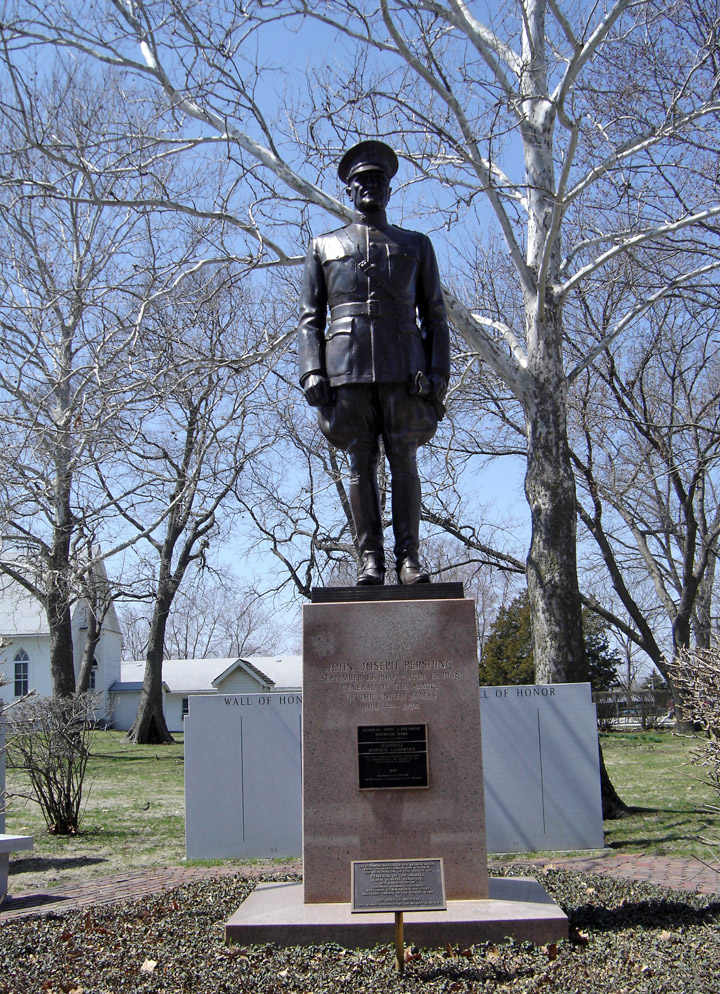
In June 1903, Pershing was ordered to return to the United States. He was
forty-three years old and still a captain in the U.S. Army. President Theodore
Roosevelt petitioned the Army General Staff to promote Pershing to colonel, but
Pershing's superiors declined the notion and also would not consider a promotion
to lieutenant colonel or even major. This angered Roosevelt, but since the
President could only promote army officers in the General ranks, his hands were
tied.
In 1904, Pershing was assigned as the Assistant Chief of Staff of the Southwest
Army Division stationed at Oklahoma City, Oklahoma. In October 1904, he attended
the Army War College and then was ordered to Washington, DC for "general duties
unassigned". Since Theodore Roosevelt could not yet promote Pershing, he
petitioned the United States Congress to authorize a diplomatic posting and
Pershing was stationed as military attaché in Tokyo in 1905. Also, in 1905,
Pershing married the daughter of powerful U.S. Senator Francis E. Warren, a
Wyoming Republican. The union greatly helped his military career.
After serving as an observer in the Russo-Japanese War, Pershing returned to the
United States in the fall of 1905. In a move that shocked the army
establishment, President Roosevelt convinced Congress to authorize the
appointment of Pershing as a brigadier general, skipping three ranks and more
than 835 officers senior to him. This promotion outraged several high ranking
Army officers who would state, for the rest of their careers, that Pershing's
appointment was the result of political connections and not military abilities
(his father-in-law was chair of the U.S. Military Appropriations Committee).

In 1908, Pershing briefly served as a U.S. military observer in the Balkans, an
assignment which was based out of Paris. Upon returning the United States, at
the end of 1909, Pershing was assigned once again to the Philippines, an
assignment which he served until 1912. While in the Philippines, he served as
Commander of Fort McKinley, near Manila, and also was the governor of the Moro
Province. The last of Pershing's four children was born in the Philippines and
it was during this time that he became an Episcopalian.
In January 1914, Pershing was assigned to command the Army 8th Brigade in Fort
Bliss, Texas, responsible for security along the U.S.-Mexico border. In March
1916, under the command of General Frederick Funston, Pershing led the 8th
Brigade on the failed 1916–17 Punitive Expedition into Mexico in search of the
revolutionary leader Pancho Villa. General Pershing was assigned a 1915 Dodge
Brothers touring car, serial number 3066. During this time, George S. Patton
served as one of Pershing's aides.
After a year at Fort Bliss, Pershing decided to bring his family there. The
arrangements were almost complete, when on the morning of August 27, 1915, he
received a telegram telling him of a tragic fire in the Presidio of San
Francisco, where a lacquered floor blaze had rapidly spread, resulting in the
smoke inhalation deaths of his wife and three young daughters. Only his
six-year-old son Warren was saved. Many who knew Pershing said he never
recovered from the deaths. After the funerals at Lakeview Cemetery in Cheyenne,
Wyoming, Pershing returned to Fort Bliss with his son, Warren, and his sister
Mae, and resumed his duties of commanding officer.

At the start of World War I President Woodrow Wilson considered mobilizing an
army to join the fight. Frederick Funston, Pershing's superior in Mexico, was
being considered for the top billet as the Commander of the American
Expeditionary Force (AEF) when he died suddenly from a heart attack on February
19, 1917. Following America's entrance into the war, Wilson named Pershing to
command, a post which he retained until 1918. Pershing, who was a major general,
was promoted to full general (the first since Philip Sheridan in 1888) in the
National Army, and was made responsible for the organization, training, and
supply of a combined professional and draft Army and National Guard force that
eventually grew from 27,000 inexperienced men to two armies (a third was forming
as the war ended) totaling over two million soldiers.
During this time, George C. Marshall served as one of Pershing's assistants, and
Douglas MacArthur served in turn as chief of staff of, then as a brigade
commander in, and then for the final month of the war, commander of the 42nd
"Rainbow" Division. Pershing's initial chief of staff was James Harbord, who
would work as Pershing's closest assistant through the years and remain
extremely loyal to Pershing.
Pershing arrived in France in 1917; although he is reputed to have said the
famous line "Lafayette, we are here" at his reception in Paris, this line was in
fact spoken by his aide, Colonel Charles E. Stanton. Token American forces were
deployed in Europe at the end of 1917, with an enormous tonic effect on Allied
morale, and in early 1918, entire divisions were beginning to serve on the front
lines alongside French troops. Pershing insisted that the AEF fight as units
under American command rather than being split up by battalions to augment
British and French regiments and brigades (although the U.S. 27th and 30th
divisions, loaned during the desperate days of spring 1918, fought with the
British/Australian/Canadian Fourth Army until the end of the war, taking part in
the breach of the Hindenburg Line in October).
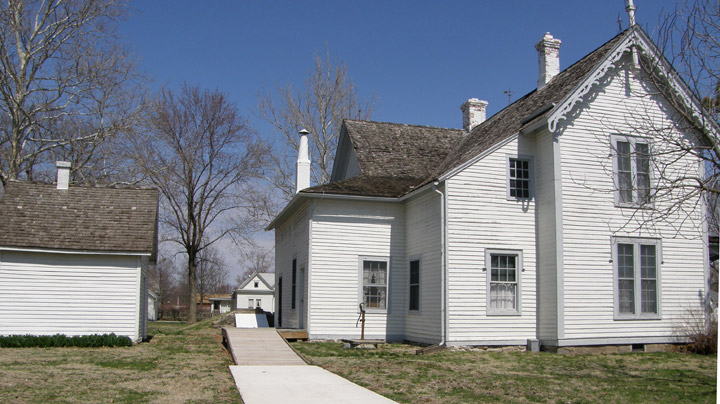
Due to the affects of trench warfare on soldiers' feet, in January, 1918,
Pershing oversaw the creation of an improved combat boot, the "1918 Trench
Boot", which became known as the "Pershing Boot" upon its introduction.
American forces first saw serious
action during the summer of 1918, contributing eight large divisions, alongside
24 French ones, at the Second Battle of the Marne. Along with the Fourth Army's
victory at Amiens, the Franco-American victory at the Second Battle of the Marne
marked the turning point of the war on the Western Front.
By the autumn, the U.S. First Army had been formed, at first under Pershing's
direct command and then, when the Second Army under Robert Bullard was added,
under that of Hunter Liggett. After a quick victory at Saint-Mihiel, east of
Verdun, some of the more bullish AEF commanders had hoped to push on eastwards
to Metz, but this did not fit in with the plans of the Allied Supreme Commander,
Marshal Foch, for three simultaneous offensives into the "bulge" of the Western
Front (the other two being the Fourth Army's breach of the Hindenburg Line and
an Anglo-Belgian offensive, led by Plumer's Second Army, in Flanders). Instead,
the AEF was required to redeploy and, aided by French tanks, launched a major
offensive northwards in very difficult terrain at Meuse-Argonne. Initially
enjoying numerical odds of eight to one, this offensive eventually engaged 35 or
40 of the 190 or so German divisions on the Western Front, although to put this
in perspective, around half the German divisions were engaged on the British
Expeditionary Force (BEF) sector at the time.
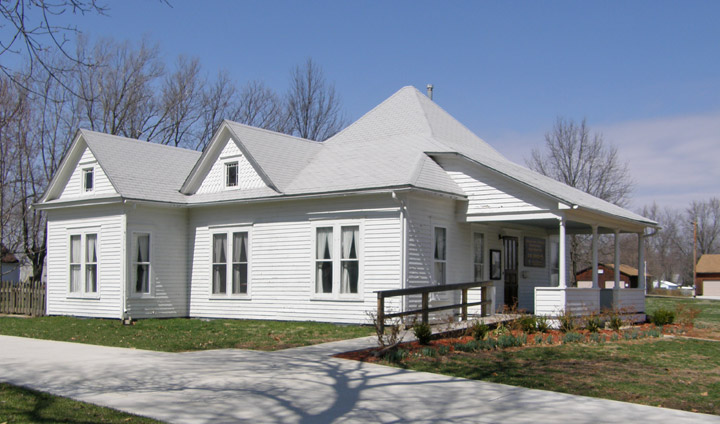
site office
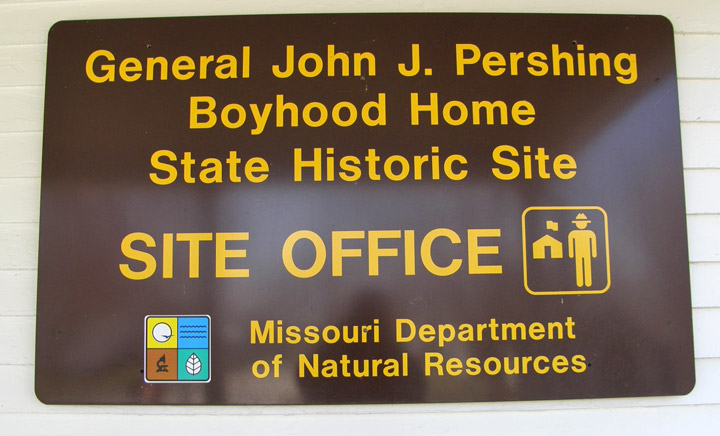
When he arrived in Europe, Pershing had openly scorned the slow trench warfare
of the previous three years on the Western Front, believing that American
soldiers' skill with the rifle would enable them to avoid costly and senseless
fighting over a small area of no man's land. This was regarded as unrealistic by
British and French generals, and (privately) by a number of American generals
such as Army Chief of Staff Tasker H. Bliss and Lieutenant General Hunter
Liggett. The AEF had done well in the relatively open warfare of the Second
Battle of the Marne, but the eventual U.S. casualty rates against German
defensive positions in the Argonne (120,000 U.S. casualties in six weeks,
against 35 or 40 German divisions) were not noticeably better than those of the
Franco-British offensive on the Somme two years earlier (600,000 casualties in
four and a half months, versus 50 or so German divisions). More ground was
gained, but then the German Army was in worse shape than in previous years.
Some writers (e.g., David Trask (1993)) have speculated that Pershing's
frustration at the slow progress through the Argonne was the cause of two
incidents which then ensued. Firstly, he ordered the U.S. First Army to take
"the honor" of recapturing Sedan, site of the French defeat in 1870; the ensuing
confusion (an order was issued that "boundaries were not to be considered
binding") exposed U.S. troops to danger not only from the French on their left,
but even from one another, as the 1st Division tacked westward by night across
the path of the 42nd (accounts differ as to whether Douglas MacArthur was really
mistaken for a German officer and arrested). Liggett, who had been away from
headquarters the previous day, had to sort out the mess and implement the
instructions from Supreme Commander Marshal Foch, allowing the French to
recapture the city; he later recorded that this was the only time during the war
in which he lost his temper.
Secondly, Pershing sent an unsolicited letter to the Allied Supreme War Council,
demanding that the Germans not be given an armistice and that instead, the
Allies should push on and obtain an unconditional surrender. Although in later
years, many, including President Franklin D. Roosevelt, felt that Pershing had
had a point, at the time, this was a breach of political authority. Pershing
narrowly escaped a serious reprimand from Wilson's aide, Colonel House, and
later apologized.
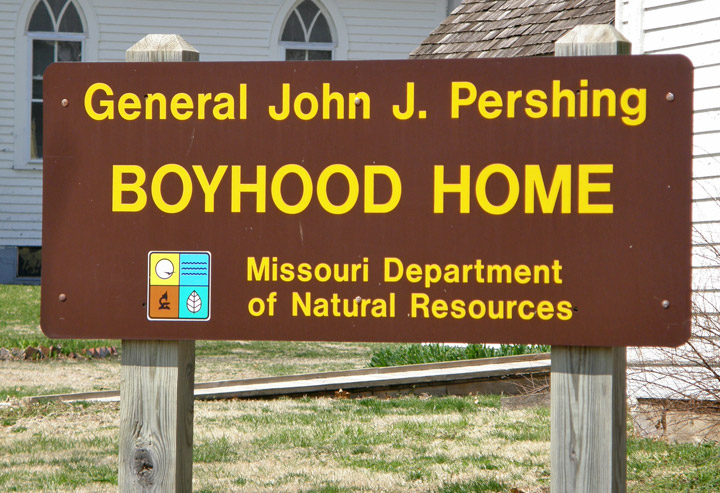
At the time of the Armistice, another U.S.-French offensive was due to start on
14 November, thrusting towards Metz and into Lorraine, to take place
simultaneously with further BEF advances through Belgium.
In his memoirs, Pershing claimed that the U.S. breakout from the Argonne at the
start of November was the decisive event leading to the German acceptance of an
armistice, because it made untenable the Antwerp-Meuse line. This is probably an
exaggeration; the outbreak of civil unrest and naval mutiny in Germany, the
collapse of Bulgaria, Turkey, and particularly Austria-Hungary following Allied
victories in Salonika, Syria, and Italy, and the Allied victories on the Western
Front were among a series of events in the autumn of 1918 which made it clear
that Allied victory was inevitable, and diplomatic inquiries about an armistice
had been going on throughout October. President Wilson was keen to tie matters
up before the mid-term elections, and the other Allies did not have the strength
to defeat Germany without U.S. help, so had little choice but to follow Wilson's
lead.
By the end of the war, U.S. troop strength in Europe (1.8 million or more) was
slightly greater than that of the BEF (1.7m). French strength (three Army
Groups, totalling 2.5m) was still greater, but much of it was deployed in quiet
sectors such as Alsace, and after horrendous casualties and mutiny earlier in
the war, France was only able or willing to undertake major offensives in
conjunction with U.S. troops. Combatant strength was approximately 60% of these
ration strengths in each case. Although the war ended before U.S. front-line
strength vastly outstripped that of the other Western Allies as would happen in
1944-5, the threat of ever-greater U.S. commitment was another factor driving
the German leadership to ask for an armistice.
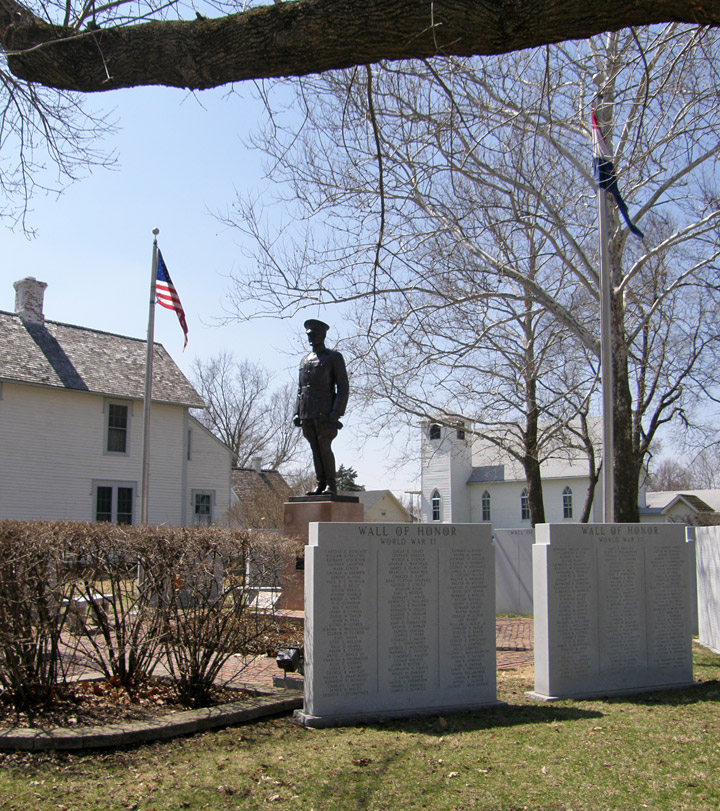
American successes were largely credited to Pershing, and he became the most
celebrated American leader of the war. Critics, however, would claim that
Pershing commanded from far behind the lines and was critical of commanders who
personally led troops into battle. This critique would become a sore point with
Douglas MacArthur, who saw Pershing as a desk soldier, and the relationship
between the two men deteriorated by the end of the war. Similar criticism of
senior commanders by the younger generation of officers (the future generals of
World War II) was made in the British and other armies, but in fairness to
Pershing it should be noted that, although it was not uncommon for brigade
commanders to serve near the front and even be killed, the state of
communications in World War I made it more practical for senior generals to
command from the rear.
In 1919, in recognition of his distinguished service during World War I, the
U.S. Congress authorized the President to promote Pershing to General of the
Armies of the United States, the highest rank possible for any member of the
United States armed forces and was created especially for him and one that only
he held at the time (General George Washington was posthumously promoted to this
rank by President Gerald Ford in 1976). Pershing was authorized to create his
insignia for the new rank, and chose to wear four gold stars for the rest of his
career, which separated him from the four (temporary) silver stars worn by Army
Chiefs of Staff, and even the five star General of the Army insignia worn by
Marshall, MacArthur, Bradley, Eisenhower, and H. 'Hap' Arnold in World War II
(Pershing outranked them all).
There was a movement to make Pershing President of the United States in 1920,
but he refused to actively campaign. In a newspaper article, he said that he
"wouldn't decline to serve" if the people wanted him and this made front page
headlines. Though Pershing was a Republican, many of his party's leaders
considered him too closely tied to the policies of the Democratic Party's
President Wilson. The Republican nomination went to Senator Warren G. Harding of
Ohio, who won the 1920 presidential election.
In 1921, Pershing became Chief of Staff of the United States Army, serving at
this posting for three years. He created the Pershing Map, a proposed national
network of military and civilian highways. The Interstate Highway System
instituted in 1956 bears considerable resemblance to the Pershing map. In 1924,
then 64 years old, Pershing retired from active military service, yet continued
to be listed on the active duty rolls as part of his commission as General of
the Armies.
On November 1, 1921 Pershing was in Kansas City to take part in the
groundbreaking ceremony for the Liberty Memorial that was being constructed
there. Also present that day were Lieutenant General Baron Jacques of Belgium,
Admiral David Beatty of Great Britain, Marshal Ferdinand Foch of France and
General Armando Diaz of Italy. One of the main speakers was Vice President
Calvin Coolidge of the United States. In 1935, bas-reliefs of Pershing, Jacques,
Foch and Diaz by sculptor Walker Hancock were added to the memorial.
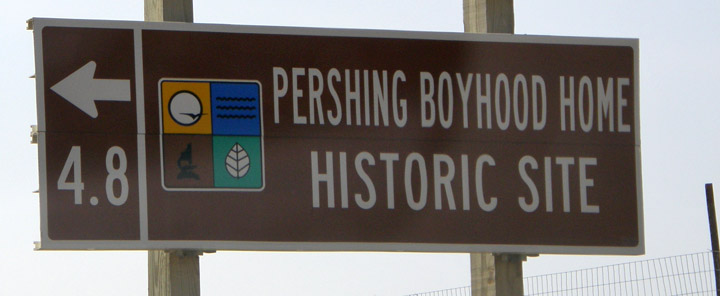
On October 2, 1922, amidst several hundred officers, many of them combat
veterans of World War I, General of the Armies, John J. "Black Jack" Pershing
formally established Reserve Officers Association (ROA) as an organization at
the Willard Hotel in Washington, D.C. ROA is a 75,000-member, professional
association of officers, former officers, and spouses of all the uniformed
services of the United States, primarily the Reserve and United States National
Guard. It is a congressionally chartered Association that advises the Congress
and the President on issues of national security on behalf of all members of the
Reserve Component.
During the 1930s, Pershing maintained a private life, but was made famous by his
memoirs, My Experiences in the World War, which were awarded the 1932 Pulitzer
Prize for history.
In 1940, Pershing was an outspoken advocate of aid for the United Kingdom during
World War II. In 1944, with the creation of the new five star rank General of
the Army, Pershing was acknowledged as the highest ranking officer of the United
States military. When asked if this made Pershing a six star General, the then
Secretary of War (Henry L. Stimson) commented that it did not, since Pershing
never wore more than four stars but that Pershing was still to be considered
senior to the present five star generals of World War II.
During World War II, Pershing was visited by Free French leader General de
Gaulle, who, when Pershing asked after the health of his old friend, Marshal
Petain (now heading the pro-German Vichy regime), replied tactfully that as far
as he knew, the marshal was quite well.
On July 15, 1948, he died at the Walter Reed Army Hospital in Washington, D.C.
(his home after 1944). Pershing is buried in Arlington National Cemetery, near
the gravesites of the soldiers he commanded in Europe, after a state funeral.
Text from Wikipedia